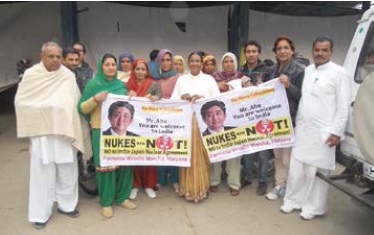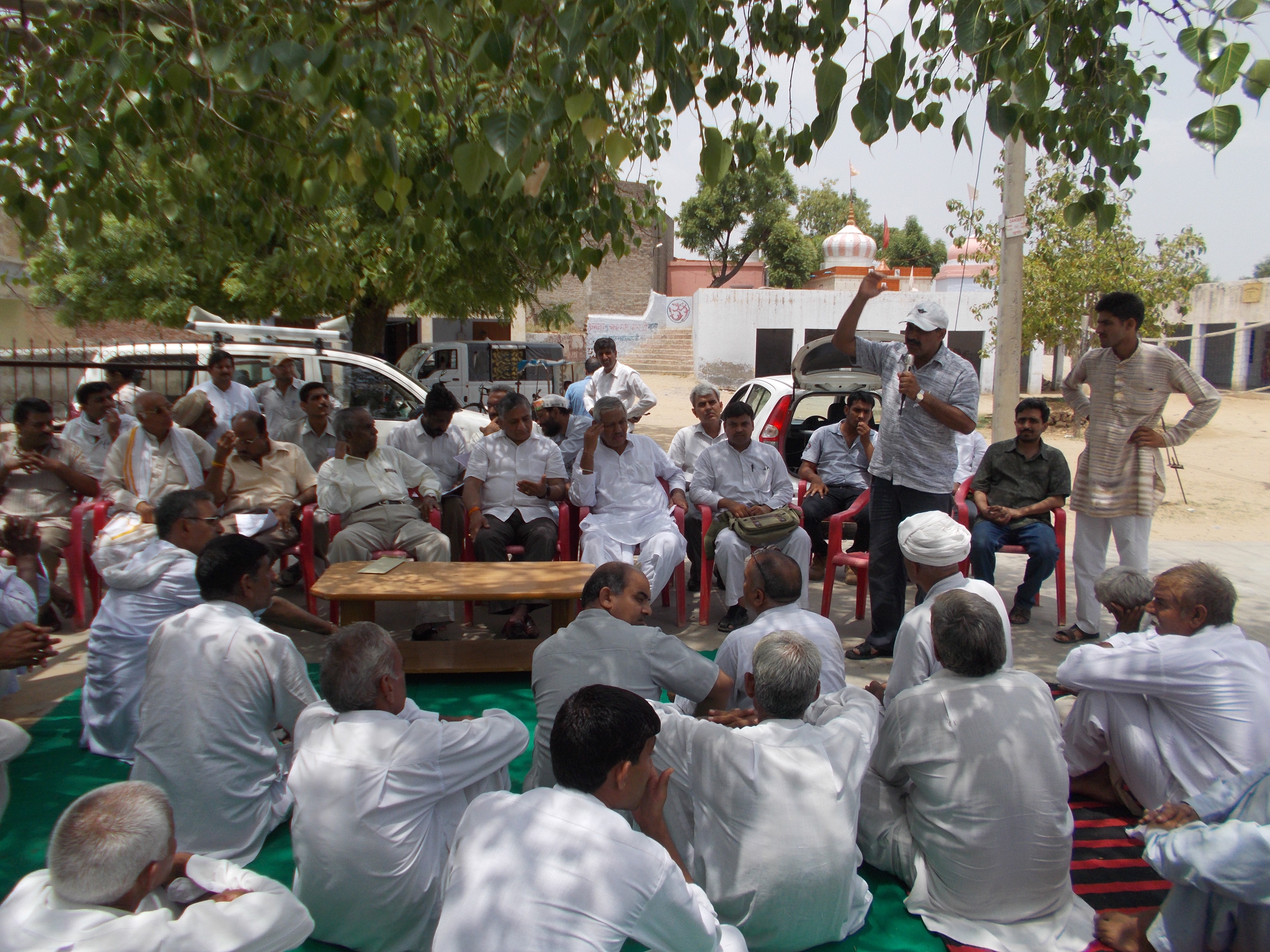Fukushima in Fatehabad?:Making sense of the catastrophe in Indian context.
 |
Final Report"Fukushima in Fatehabad:What a Nuclear Accident at delhi's dorrstep will mean."[pdf446KB] |
|
 |
Kumar Sundaram | |
 |
JPY 300,000 |
Research Background Final Report (abstract) Others

Local people at Gorakhpur village protesting nuclear deal
with Japan during Prime Minister Abe's visit

Gorakhpur-village-protest meeting
Research Background
A nuclear accident like Fukushima might get amplified and complicated manifold by the sheer density of population, lack of independent regulator and public experts, absence of adequate administrative emergency response and largely uninformed and desperately poor people.
I propose to do a hypothetical case study of Fukushima occurring in Fatehabad, 210 kms from India:s capital New Delhi, where the Gorakhpur Nuclear Power Plant is under construction.
The proposed work would involve putting the consequences and implications of the Fukushima accident in the Indian context and disseminating it widely through message boards, brochures and workshops.
A case study of what would be the implications of a Fukushima in the Indian context would be done taking into account the response in Japan at various stages of the accident and its implications. The experience and lessons of the Fukushima accident - beginning from initial emergency response, evacuation, then the attempts to contain the accident and decontaminate the area, and the relief and rehabilitation of the evacuees - would be used in this hypothetical study to analyse the potential consequences of a similar accident happening in Fatehabad. The technological differences between the Fukushima reactor and the PHWR being built in Gorakhpur would also be taken into account.
The recently-published booklet of on the 4th year anniversary of the accident by the Fukushima Booklet Publication Committee, the report of the Citizens Commission on Nuclear Energy and the Independent Committee`s report on Fukushima would be used as the basic resources to build a model based on five major themes - technological response to the nuclear accident, emergency response for the people, evacuation and rehabilitation, and, the social and psychological effects.
[Sep. 2014]
Final Report (abstract)
The Gorakhpur Atomic Power Project, currently under construction in
Fatehabad district in the State of Haryana, is located at distance of merely 150kms from India's national capital - New Delhi. This nuclear plant will be India's biggest indigenously-built reactor so far - with a total capacity of 2800 Megawatts, 4 reactors of 700 Megawatt capacity each. Since the Fukushima accident in 2011, it is the first new reactor site where construction has started on the ground. The former Prime Minister Mr. Manmohan Singh inaugurated the foundation ceremony in January 2014. It is also India's largest in-land reactor after Fukushima where as
China and several other countries have placed a moratorium on inland nuclear construction.
For its crucial water supply - for cooling in normal operation as well as during future accidents - GAPP depends on the Bhakhra Link Canal, and has no other big water-source in the 200 km radius. This has led to legitimate concerns of insurmountable destruction in case of a potential accident. The already inadequate water supply will be further affected by changing climate and growing water requirements in the region which often lead to social skirmishes and tension with neighbouring state.
A Fukushima-like nuclear accident in India would likely get amplified and
complicated manifold by the sheer density of population. Fatehabad district has apopulation of more than 9,40,000 and emergency evacuation and rehabilitation in Fatehabad would be an insurmountable challenge given the bureaucratic cobweb and its unaccountability. In general, the lack of independent nuclear regulator and public experts, absence of adequate administrative emergency responses, and largely uninformed and abjectly poor people would mean that any serious accident
would become unmanageable.
This report presents a hypothetical case study of implications of a Fukushimalike accident in the Indian context, taking into account the response in Japan at various stages of the accident and its implications. The experience and lessons of the Fukushima accident - beginning from initial emergency response and evacuation, to the attempts to contain the accident and decontaminate the area, and the relief and
rehabilitation of the evacuees - have been used in this hypothetical study to analyse the potential consequences of a similar accident in Fatehabad.
The report conclusively establishes, with insights from independent experts and local activists in Gorakhpur, that a Fukushima-like accident in Fatehabad will cause massive destruction. At least half a million people will be affected by its consequences - and radiological impacts will be severely amplified by the nonexisting supportive infrastructure and governance mechanisms to deal with catastrophes of such scale.
[Sep. 2017]
Others
